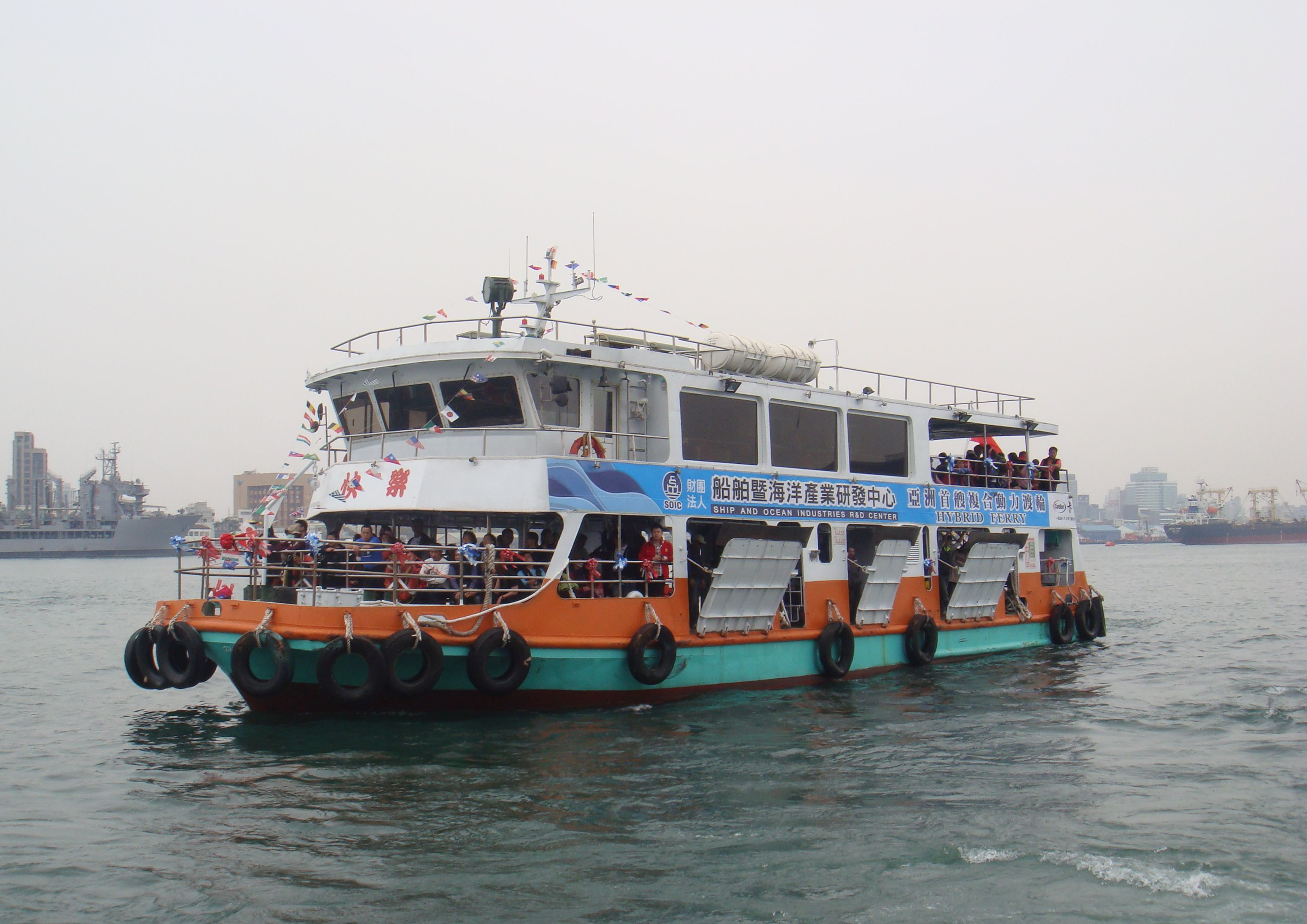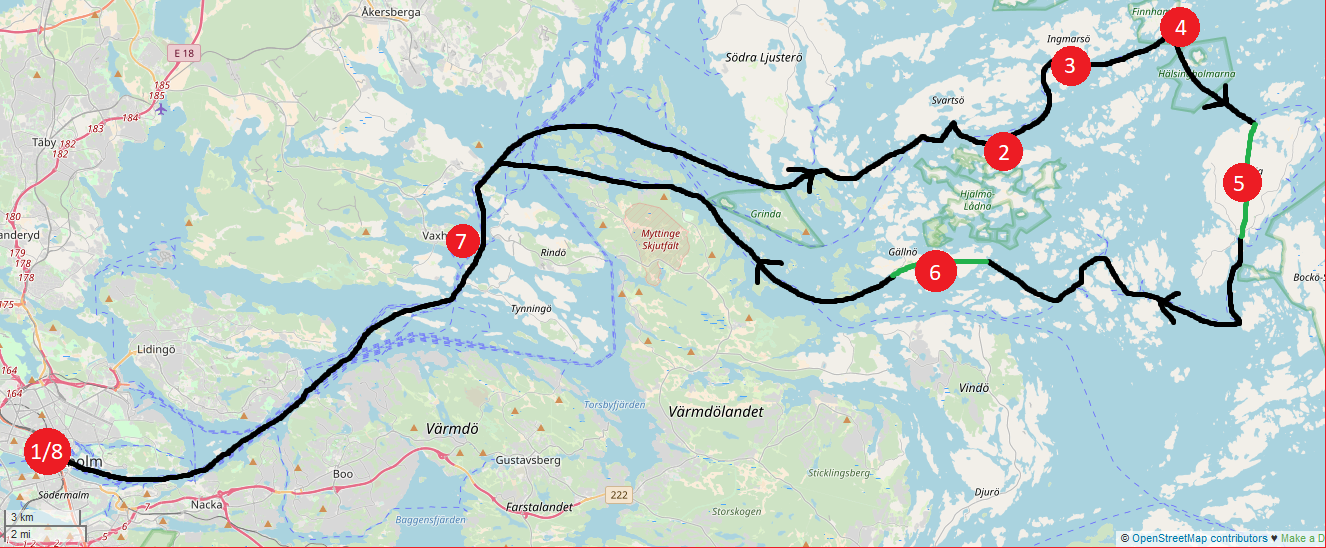
Problemen met registreren of reageren op de berichten?
Een verloren wachtwoord?
Gelieve een mail te zenden naar [email protected] met vermelding van je gebruikersnaam.
 |
Registreren kan je hier. Problemen met registreren of reageren op de berichten? Een verloren wachtwoord? Gelieve een mail te zenden naar [email protected] met vermelding van je gebruikersnaam. |
|
|||||||
| Registreer | FAQ | Forumreglement | Ledenlijst |
| Mobiliteit & verkeersveiligheid Een nieuw themaforum! |
 |
|
|
Discussietools |
|
|
#21 | |||||
|
Secretaris-Generaal VN
Geregistreerd: 18 mei 2005
Locatie: Limburg
Berichten: 50.235
|
Citaat:
De geplande route tussen Noorwegen en Zweden is volgens googlemaps veerbootroute 68,5 km ver. Citaat:
Maar in Noorwegen en Zweden moet je meestal langs een engere fjord (Sandefjord) met bebouwing waar die hybride gewoon electrisch kan varen, op open zee kan de diesel de batterijen deels bijladen of gewoon hybride bollen met betere efficientie, in de haven kan de boot aan de dikke prise, staat er allemaal in he. Citaat:
Citaat:
Citaat:
Laatst gewijzigd door Micele : 5 augustus 2019 om 00:48. |
|||||
|
|

|
|
|
#22 |
|
Secretaris-Generaal VN
Geregistreerd: 15 juli 2008
Locatie: GROOT LUIK (Liège)
Berichten: 64.878
|
|
|
|

|
|
|
#23 | |
|
Secretaris-Generaal VN
Geregistreerd: 18 mei 2005
Locatie: Limburg
Berichten: 50.235
|
Nice, E-ferries in Taiwan.
De helft van de overzet kan puur electrisch, vuile dieselaandrijving eruit of retrofit. Enkel nog een (minder vuile) diesel als generator om de batterijen op peil te houden voor de andere helft van de overzet. Hybride even. Gemeten 33% dieselbesparing, maar ook 50% besparing is doenbaar. De haveninwoners kunnen al wat minder vuile lucht ademen, idem minder lawaai, enz... Citaat:
 Laatst gewijzigd door Micele : 5 augustus 2019 om 09:34. |
|
|
|

|
|
|
#24 | |
|
Secretaris-Generaal VN
Geregistreerd: 18 mei 2005
Locatie: Limburg
Berichten: 50.235
|
Veel korter bij thuis zijn natuurlijk de ferries in UK naar bepaalde eilanden.
Onder andere ferry Portsmouth - Fishbourne (Isle of Wright): Citaat:
Laatst gewijzigd door Micele : 5 augustus 2019 om 09:50. |
|
|
|

|
|
|
#25 |
|
Secretaris-Generaal VN
Geregistreerd: 23 mei 2007
Berichten: 34.146
|
gans die boot verbruikt in standby 10-20MW airco's lichten, keukens etc
|
|
|

|
|
|
#26 |
|
Secretaris-Generaal VN
Geregistreerd: 23 mei 2007
Berichten: 34.146
|
zal speedbootje zijn
in elk geval; 100liter x 10kWh = 1MWh/uur, elektrisch zou dat 0.3MWh kunnen zijn |
|
|

|
|
|
#27 | |
|
Secretaris-Generaal VN
Geregistreerd: 18 mei 2005
Locatie: Limburg
Berichten: 50.235
|
Ik was 11 jaar geleden 4 dagen in "agglomeratie" Stockholm, toen vaarden de vele ferries nog enkel op diesel.
Dit jaar begonnen ze dus ook electrisch, bovendien moeten ze ook een bepaalde ijsdikte (25 cm aan 4 kt) aankunnen: Citaat:
 De korte ferrytrips in het centrum zullen nu wel electrisch worden: https://www.stockholmpass.com/images...gh_MAY2017.jpg (groen) Laatst gewijzigd door Micele : 5 augustus 2019 om 14:02. |
|
|
|

|
|
|
#28 | |
|
Banneling
Geregistreerd: 11 januari 2004
Berichten: 66.569
|
Citaat:
Bron: mijn bezoek aan een echte, in dienst zijnde, onderzeeer. |
|
|
|

|
|
|
#29 |
|
Banneling
Geregistreerd: 11 januari 2004
Berichten: 66.569
|
Ik heb reeds een fjordencruise gedaan met een full electric schip.
Zalig. De stilte. Kan het iedereen aanraden. De trip met de doempboot is veel minder aangenaam (doemp, lawaai, stank...). |
|
|

|
|
|
#30 |
|
Secretaris-Generaal VN
Geregistreerd: 23 mei 2007
Berichten: 34.146
|
Ik was aan het denken:
100l 1 MWh 30% rendement 300kWh Dus dat speedbootje heeft 3 tesla100kwh batterijen nodig, of kost dan 100.000 euro extra... Moesten ze nu eens een wetje,maken dat alles dat meer dan 33l per uur verbruikt eruit moet of elektrisch moet... Dan zou een maserati , Porsche , Bentley, aston Martin Al hun zuipmonsters moeten begrenzen.. of omzetten naar elektrisch Vrachtverkeer zouden een paar zuipschuiten eruit moeten Speedboten Idemdito |
|
|

|